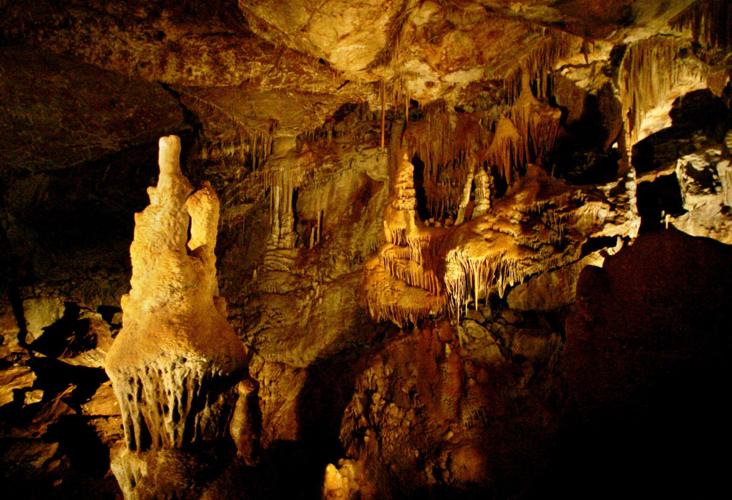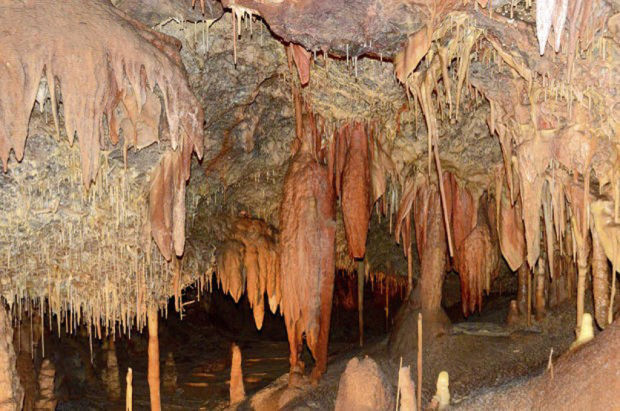A kerfuffle erupted last week between Benson city leaders and the state parks department over how a massive development proposed in the tiny Cochise County town could affect one of the county’s biggest tourist draws, Kartchner Caverns State Park.
Following a furious letter from Benson’s city manager to Gov. Doug Ducey — who appoints the director of the Arizona State Parks — a parks official initially backed away from the agency’s demands for assurance that the Villages at Vigneto won’t harm the caverns’ fragile ecosystem.
Jim Keegan, deputy director of Arizona State Parks, said in an interview Thursday that the city has already addressed the agency’s concerns — including Kartchner’s water levels, water quality and traffic patterns — aired last week at a public hearing.
“The vast majority of it has all been cleared up,” he said.
But Arizona State Parks director Sue Black said Friday that the parks department is still negotiating with developer El Dorado Holdings and Benson city leaders over protections for the caverns.
“It’s a work in progress right now,” she said. “I’m just pleased there’s collaboration and cooperation.”
The proposed master planned community could bring 28,000 homes and 70,000 people to Benson. Opponents worry the project’s groundwater pumping could harm precarious ecosystems in and around the federally protected San Pedro Riparian National Conservation Area.
Environmentalists say too much is still unknown about Vigneto’s potential impact on Kartchner for all water concerns to have been addressed.
Geologist Norm “Mick” Meader has studied the caverns alongside Kartchner park scientist Bob Casavant. He said the statement given at the Benson meeting “doesn’t really do justice to (Casavant’s) scientific acumen.” The statement, prepared by other park officials, was “alarmist” in its suggestion that the park might shut down, undermining Casavant’s valid concerns about the caverns’ vulnerability, Meader said.
NEW REPORT
Meader, co-president of the Cascabel Conservation Association, which is involved in a lawsuit related to Vigneto, recently released a report on the relationship between Kartchner Caverns and the development.
“While Vigneto pumping would not directly affect the caverns by draining water from them … it could indirectly do so by affecting the water table beneath them,” the report said.
But without further research, it’s impossible to know how Vigneto would affect the caves, Meader said.
Benson City Manager Bill Stephens said the city has committed to connecting Kartchner Caverns State Park with city water lines that would be extended to the Vigneto development, so the park wouldn’t have to draw from the same aquifer that feeds the caverns.
That would make the park system “more resilient and better able to withstand possible water losses from Vigneto,” Meader said.
“That addresses one of the central concerns that we can do something about,” he said. The biggest threats to Kartchner’s water supply are the effects of climate change, such as the ongoing drought, and groundwater pumping from the park itself, he said.
STIPULATIONS
FOR SUPPORT
The dust-up started July 5, when three parks officials voiced concerns about Kartchner’s future during a Benson zoning commission public hearing on the Vigneto project. The commission ultimately recommended that the City Council vote to approve the project, which could happen on July 18.
Park officials listed six “stipulations” they said should be added to the final master plan for Vigneto before the parks department would support the project, including assurance that Vigneto’s groundwater pumping wouldn’t affect water levels and water quality at the caverns.
Some Benson officials were outraged by the public way in which the parks department presented its concerns.
“They blindsided us,” City Councilman Jeff Cook said. “I’m in agreement with everything they’re saying. I just don’t think it falls firmly in our jurisdiction.”
Water issues are regulated by the state departments of environmental quality and water resources, he said.
On Wednesday, Benson City Manger Stephens wrote in a letter to Gov. Ducey that the park officials’ presentation was an “ambush.” Presenters ignored “intergovernmental courtesy” and embarrassed the city by failing to discuss their concerns with city leaders before the public meeting, he wrote.
By Thursday, tensions had cooled. Stephens told the Star that Benson leaders met with park officials to fill them in on how some of the park’s concerns had already been addressed, such as traffic concerns that the city worked out with the department of transportation.
Stephens said he plans to send another letter to Ducey saying the parties are now on good terms.
UNKNOWN IMPACT
Vigneto supporters tout the project’s expected economic benefits, which developer El Dorado Holdings says could spur “unprecedented economic activity” in Benson. El Dorado spokesman Mike Reinbold would not comment on the concerns about Kartchner.
Kartchner Caverns is one of the few living caves that is accessible to the public. It contains still-growing formations — created by water seepage leaving behind mineral deposits — that reach up from the caverns’ floors and down from the ceiling.
The caverns are also an “economic engine” for Cochise County, said Kartchner scientist Casavant. A 2015 economic impact report found that visitors to Kartchner brought nearly $10 million to Cochise County in fiscal year 2014.
The sprawling limestone caverns — a maternity roost for throngs of bats every summer — are about six miles upstream from the planned Vigneto development and the two are separated by a ridge.
But surface topography does not reflect what’s going on underground, Casavant said. The park’s internal research indicates the fractured, water-holding bedrock surrounding the caverns is connected to other underground limestone caverns throughout the area.
“Our models show we’re linked more than people think,” even to areas downstream, he said.
Kartchner’s latest research hasn’t been included in any scientific evaluations of the potential impacts of Vigneto, Casavant said.
A recent study commissioned by the Center for Biological Diversity — which opposes the development — didn’t incorporate Kartchner’s models. The study concluded Vigneto could harm the St. David Cienega, but was unlikely to affect Kartchner because its water system appears “isolated.”
The study was “spot-on in many aspects, but you’ll notice in that report it excludes Kartchner, because the literature out there is outdated,” Casavant said.
A U.S. Geological Survey study that would have explored how groundwater pumping affects the San Pedro River was defunded in 2010. It could take $1 million to finish the study.
“My request is to slow down,” Casavant said. “The concerns we raise, and the concerns others raise, are valid. We do not want the caverns to become high and dry.”





